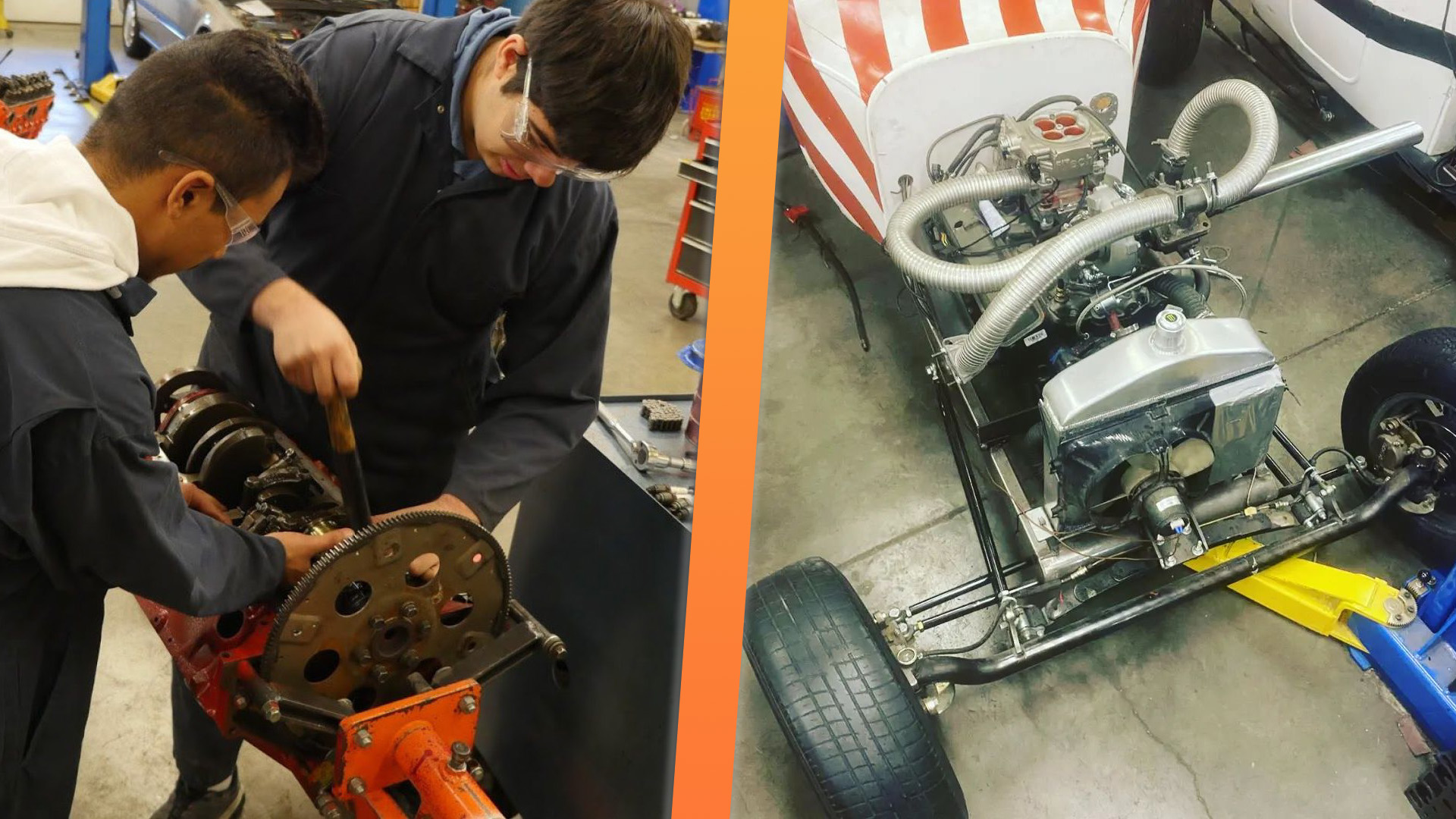

Across the U.S., car shops have an increasingly hard time finding skilled mechanics. The growing inaccessibility of cars only worsens the problem, as kids who can’t fathom affording a car aren’t as inclined to learn how to fix them. At Meadowdale High School in Lynnwood, Washington, the school found a way to bring its automotive program roaring back from the brink. As it turns out, kids don’t just want to learn how to fix cars—they want to learn how to make them fast. That’s why the school’s radical curriculum now includes building hot rods.
Meadowvale’s automotive instructor Bryan Robbins explained to me that after taking over the automotive course from his father in 2013, the program was in a sad state. At its lowest point, only nine students were enrolled, leaving a small party to bid farewell when the shop’s pride and joy—a donated Dodge Viper—was recalled and crushed for mysterious reasons. Fortunately, Robbins was on the mind of his fellow automotive teacher Pat McCue at Bothell High School, whose students had constructed an electric dragster with the help of the educational organization Foundry10. McCue directed the group’s attention to Robbins’ program at Meadowdale, where students met a representative with an emotional pitch, recounting the confiscation of the school’s Viper while one student played a sad song on the violin (yes, really). They had a simple request: Help get them Model T kit cars and a mixture of motors to power them—V8s and EV conversion kits.







Foundry10 obliged and, in doing so, set the stage for the school’s automotive renaissance. Today, Robbins says his program has 70 students enrolled (including five girls) in three levels of courses and a waiting list to get in—even kids from other schools are trying to sign up. Taking the full course involves five semesters of classes; one technical prerequisite and four of hands-on experience for two periods a day. Students earn a combination of college credits and real-world service certifications, including those for air conditioning systems and Entry Level ASE Certification, as well as bonuses like discounted Snap-On tool and automatic passes on graduation testing.
The icing on the cake, of course, is the final semester that’s focused on the hot rods. The highest-scoring students from the prior semester get to take the lead on one of up to five cars, choosing between a variety of Chevy and Ford V8s or an electric drivetrain supplied by Wilderness EV. Students working on the combustion-engine cars rebuild their junkyard-sourced motors, stripping them down to the block to take measurements for new seals and bearings. They then install their engines for testing, with their final grade depending on their hot rod’s performance.
“Grading criteria will vary depending on the drivetrain,” Robbins told me. “For example, for a 100-percent grade, a student installing a gas drivetrain will have to present me with a car that I can drive into the parking lot and do a burnout with enough smoke to make the car completely disappear.”
After the semester, each hot rod has its drivetrain removed to prepare it for the next course, so a new batch of students can have the experience of building a car themselves. It’s an experience Robbins is grateful to watch—the next generation of car enthusiasts blossoming before his eyes.
“I can’t believe how lucky I am,” Robbins said. “It’s crazy to think they actually pay me to have this much fun.”

Got a tip or question for the author? You can reach them here: james@thedrive.com